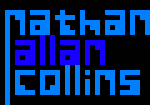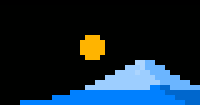
2012.03.26: Jizō
These next few days I spent around Okazaki, mostly with Chris, my friend from Yamasa.

We went to the new gigantic Book-Off in Okazaki (since I hadn't been there in a few days), where we found this. What is this? It's a model of USS Kitty Hawk, of course, painted with the main cast from K-On!, an anime about high school girls in an after-school rock band. Since this is Kitty Hawk, the girls are wearing cat ears. And french maid costumes, I guess. There's actually a whole genre of anime character decals on military vehicles, aircraft, etc., as well as personal cars in real life, although I've only once seen one on the street, and that was in Nagoya.

Then we went to a game center, where we played crane games to win two sickeningly cute stuffed Pikachu dolls, which we are claiming we got for our girlfriends. But we know the truth. In the picture above, Chris is playing a medal game, wherein you exchange real money for fake money, then gamble the fake money for more fake money that you can't exchange back into real money. The idea of gambling with literally a 0.0% chance of payout may sound crazy, but the flashing lights and spinning wheels and flying coins can induce a zen-like state, and for some reason a fake jackpot is nearly as compelling as a real one. I put in a little more than ten dollars, which is very much on the small side of what people spend on these, and only regret it slightly.

Here's Chris pouring some ponzu sauce at a shabu shabu restaurant. In shabu shabu, thin slices of meat and vegetables are served raw to the table, to be cooked in a shared pot of boiling water or broth. The process goes like this: toss something you want to eat into the pot, swirl it around with chopsticks until it's cooked, remove, dip in sauce, and eat. Between the raw meat and open vat of boiling liquid, I'm pretty sure this wouldn't pass the first page of the US food code. And if you think that's bad, another day we went to a place where we deep-fried food at the table.
After what seemed like an endless stretch of rainy days, the sun came out on the 26th, so I took my borrowed bike out for a ride through Okazaki. I saw some places on a local travel blog that I hadn't known about, and I planned my trip on that, and ended up biking about twenty miles. There's a lot of pictures, so I'll keep the descriptions brief.

Downtown Okazaki from a pedestrian overpass.

My first target: Shōō-ji (松応寺). A Buddhist temple built by Tokugawa Ieyasu in 1960 near the secret gravesite of his father. The entrance to the temple is through this arcade, where on some days (sadly not this one) local merchants set up tables to sell their wares.

Inside the Shōō-ji Arcade. Letters read:
Complete in one solution
One Step Perm

Shōō-ji Arcade roof.

Close up of bell at Shōō-ji. This bell has a long history. Ieyasu's ninth son, Tokugawa Yoshinao, commissioned this bell for the temple in 1635. During World War II, many temple bells were melted for scrap metal, but this one was deemed culturally significant enough to earn an exception—only for a US air raid to firebomb the bell's housing. Luckily, the bell survived and stands again today.

Ceiling of the Shōō-ji bell's housing.

Gray, depressing, and mysterious building with green mesh over its windows as seen from the courtyard at Shōō-ji. Wanting to figure out what it was, I investigated further but found only one door leading inside, located in a small alley. I did not try the door.

Jōsei-in (浄誓院) main building and garden. Another small temple just south of the Shōō-ji Arcade.

Streetside Jizō statues near Kōzen-ji, Uomachi, Okazaki. Jizō is the guardian of children. The statues are often given bibs by parents either as a petition for protection of their kids, or for caretaking of children in the afterlife.

A small recession built into the corner of a building to house a Jizō statue.

Close up of the same. Toys, trinkets, stones, and scraps given to Jizō.

A Koma-inu at Shiroyama-jinja. Koma-inu statues are often found outside Shinto shrines and always appear in pairs. They are a Japanese take on the Chinese lion statues seen in front of many American Chinese restaurants, and probably China.

Koma-inu at Shiroyama-jinja.

Inside a small open-air prayer alcove at Shiroyama-jinja.
And here's a couple more as a palate cleanser.

Graffiti in Highway 248 underpass, Okazaki.

Elvis statue in Treasure Bomb, a used goods store in West Okazaki.


